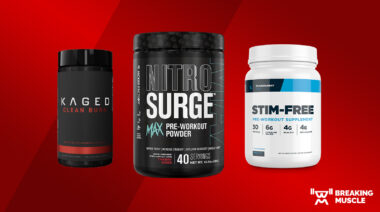The use of oxygen supplementation in athletics is on the rise, as are manufacturer’s claims regarding its performance-enhancing effects. However, it’s important that we look at the science in these cases to find out if it’s mumbo jumbo or not. A study in the Journal of Strength and Conditioning Research aimed to find out if personal use of oxygen supplementation was actually effective.
An oxygen supplement provides a means of increasing the oxygen in the air you inhale, with the intention of improving energy creation and thus performance. The upward trend in the oxygen supplement industry may be a result of recent doubts cast on the previously popular elevation training ideology. The thought was that training in environmental hypoxia could actually improve performance when the hypoxia is removed. Environmental hypoxia is when the air contains less than 20.9% oxygen, such as at high elevation. However, not only is it difficult to replicate these conditions in people who can’t train in the mountains, but the practice itself has recently come under question.
The researchers in the new study hypothesized that if low oxygen (hypoxia) doesn’t work, perhaps high oxygen (hyperoxia) does. Not only could it enhance performance, but it may be easier to obtain for personal use. The study looked at simple cans of oxygen directed into tubes from which the study participants breathed. It might look a little goofy, but it’s much easier than creating true environmental hyperoxic conditions.
The tests in the study were performed on a treadmill at eighty percent of each participant’s VO2 max. Each participant wore a mask connected to a tube into which a can of supplementary oxygen was sprayed, or, for the control, a can of regular old air. They then ran at this pace, breathing in their canned oxygen or air until they couldn’t go on any more, and the data was recorded.
Ultimately, the researchers discovered no statistical difference between the groups. In a run that lasted between about fifteen to twenty minutes, however, the oxygen group did go an average of about a minute longer. The problem is, with a group this size and under these conditions, that simply isn’t a large enough difference to be able to say it was due to the oxygen supplementation.
That’s not the end of the story, however. In the study the oxygen was administered once every five minutes, so it wasn’t steady for the entire duration. This means they only received the actual dose perhaps three or four times during the exercise. It’s entirely possible the results might have been different with more administration of the oxygen, or a steady dose. However, that was not the manufacturer’s recommendation, which is what the researchers used.
Not only were the doses low, but the researchers had no way of monitoring the actual amount of oxygen consumed. Remember that the oxygen cans used were for personal use, so they were simply cans that emptied into a tube. That could mean the participants weren’t receiving the level of oxygen the researchers had thought.
In the end, oxygen supplementation doesn’t work, at least not under these conditions. However, if it did indeed give a boost of one minute in a test that long, it may very well be a significant performance enhancer in larger doses. Only time will tell.
References:
1. Cory Etheredge, et. al., “The Effects of A Personal Oxygen Supplement on Performance, Recovery, and Cognitive Function During and After Exhaustive Exercise,” Journal of Strength and Conditioning Research, DOI: 10.1519/JSC.0000000000000371
Photo courtesy of Shutterstock.






